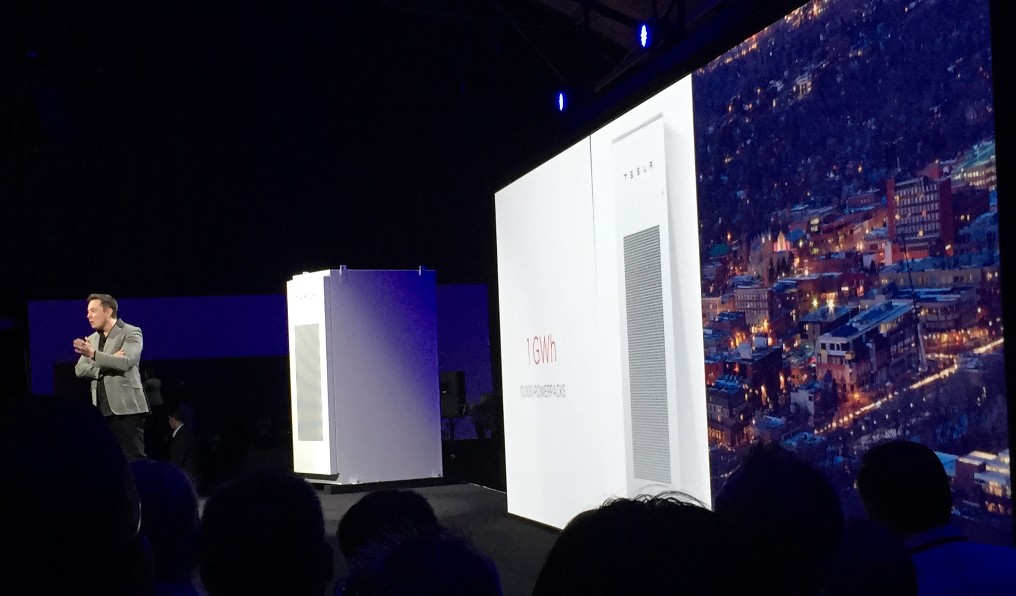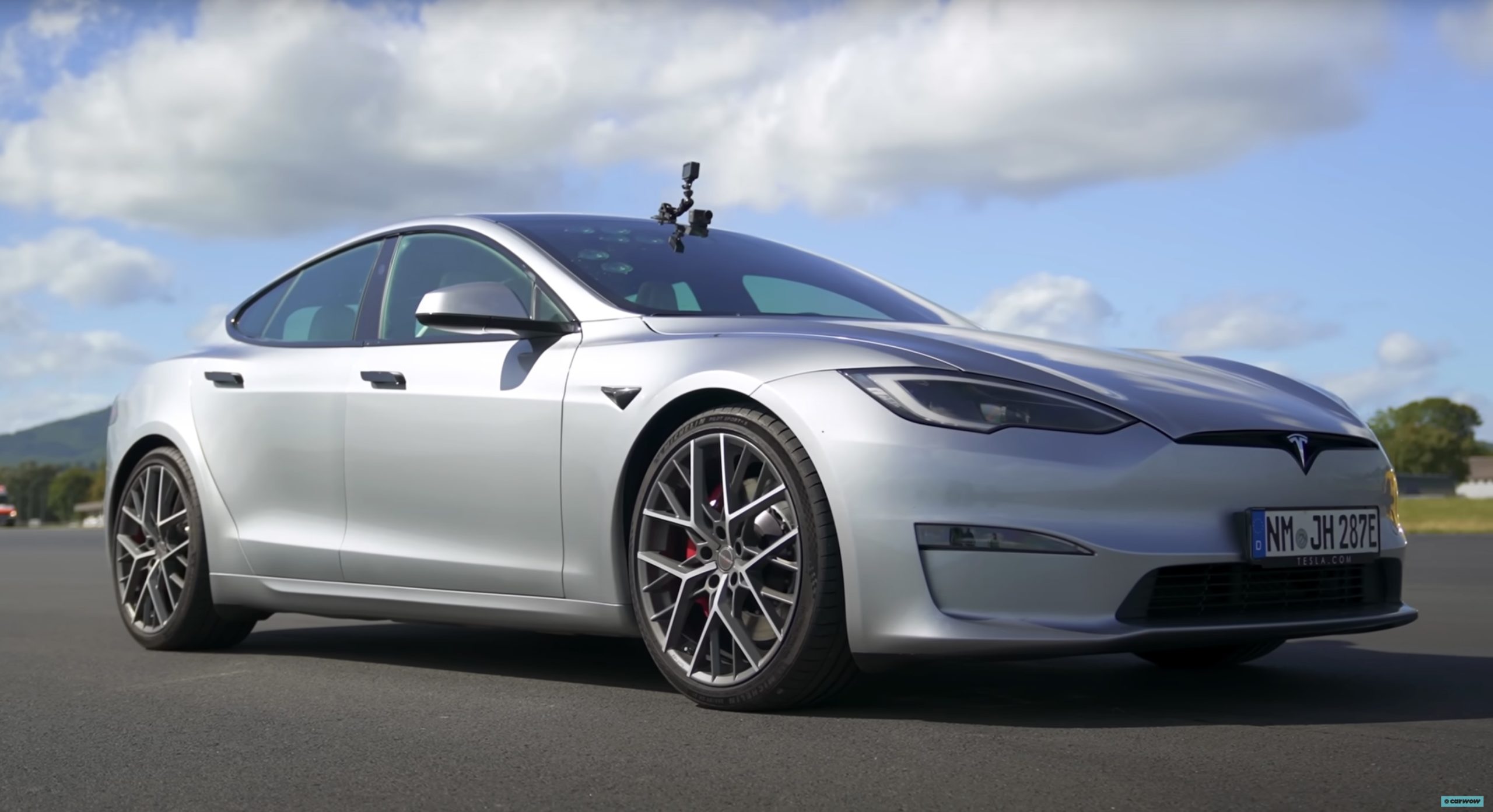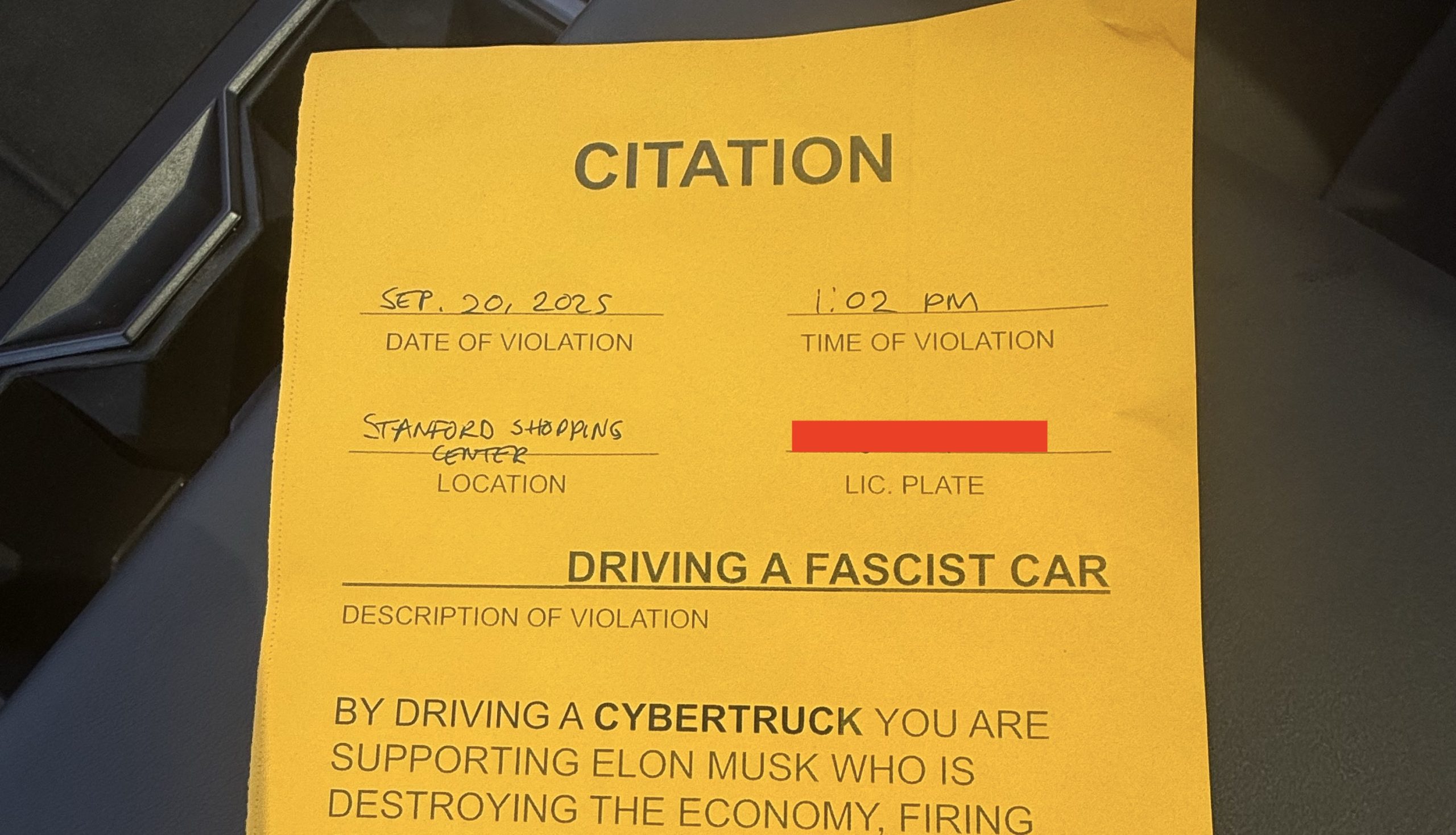Lifestyle
Tesla is going to light solar on fire

Here we go again!
AC verses DC, much like Mac verses PC, is a tale as old as time. Battles fought, but the war never won. We use both everyday depending on the use and application. Each current has its place.
Energy is a pretty hot topic these days and solar is poised to become the next great battleground for the Current War. Much like it has always been, most people spend little time thinking about electrical currents. They plug something into something else and it typically just works. EV and solar aficionados on the other hand are keenly aware of the difference.
Here is a general and very basic reminder of the difference between the two currents: Typical solar panels, by their nature, have a direct current (DC) output. Household circuits and electric utility service lines use alternating current (AC). An inverter converts DC from a solar panel into household AC. String inverters handle the current conversion for a group of panels, while micro-inverters convert the current for each individual panel. Some panel manufacturers offer micro-inverters mounted on each panels and designate them as AC panels. In general, these two configurations have similar efficiency but offer unique sets of benefits for how they are used, installed, and maintained. It is important to note that each time current is converted to AC from DC and vice verse, there are losses in efficiency.
Batteries for solar arrays are similar to the panels in the sense that they are also DC by nature. These too need an inverter to get from DC to AC. There are even some that are packaged with built-in charger/inverters and marketed as “AC batteries”.
It is widely accepted that batteries are integral to the viability of solar as sustainable energy solution. Additionally, the best place for solar arrays are at their point of use, i.e. homes, office buildings, and garages. Battery storage is the key component for bridging the gap of time between energy production and use.
In a residential application the Current War is a matter of how far DC should be carried into a home, when and where it should be converted, and how many times it needs converted.
As a challenge for manufacturers and system designers, every system configuration needs to be unique to the user’s needs and goals. Some solar manufacturers have addressed the different complexities by converting everything to AC as quickly as possible. This makes a system very easy to configure, install, and expand. Each panel has a micro-inverter that essentially ties into a household AC system directly. “AC batteries” compliment this system by also tying into the house AC system directly. The generation and storage can both be easily scaled up or down based on a user’s needs. Working with AC is considered safer than with DC, which add to the reasons for why this method is appealing. The downside comes from converting current twice between the panels and the batteries, resulting in a slight reduction in efficiency.
Ironically, Tesla is expected to make a big push for a very DC-focused system, integrating a bunch of functions and elements. Nikola Tesla might be turning in his grave. Their goal is to limit the current conversion to a single point at the most downstream point possible, immediately before entering the household AC system.
Everything but the motor and onboard charger in a Tesla vehicle uses DC. Supercharging is achieved through DC and bypassing the onboard charger. The Tesla Powerwall is DC. Solar panel output is DC. It’s pretty obvious why Tesla is growing it’s DC ecosystem.
Energy generation and storage stay on the same side of the inverter. Additionally, Tesla is expected to switch another element to the DC side; the vehicle wall charger. Removing the current conversion bottlenecks will enable the vehicle to charge directly from the DC home battery to the car’s DC battery. I like to think of it as a dam exploding and releasing it’s reservoir of electrons, turning a trickling stream into a raging river!
Speculation is also swirling around the idea of vehicle-to-grid power. This would open a whole new realm of possibilities. It’s hard to say what use Tesla will make of this technology, but it could be possible to use your Tesla vehicle battery to power your home if the grid fails, or even send energy back to grid during demand spikes.
For comparison, lets look at how an AC-focused system would compare to a DC-focused system in everyday use for a house with a Tesla vehicle from the vantage of an electron (keep in mind that these two examples hardly represent the entire spectrum):
Current Conversion Points:
AC:
- Solar panel generates DC current
- Unused mid-day Solar DC current converted to household AC at the panel
- Household AC converted to DC at the house battery as excess storage
- House battery DC converted back to household AC at night to charge your vehicle
- Household AC converted to DC in the vehicles onboard charger and sent to vehicle battery
DC:
- Solar panel generates DC current. Unused mid-day solar DC sent to house battery as excess storage. Then the same current flows from your house battery to your car battery.
Zero conversions in the DC ecosystem compared to four conversions in the AC ecosystem. No loss of efficiency. No bottlenecks. Pretty slick, right?
Yeah, I didn’t address what happens when your DC house battery is low and you draw from the grid and need an AC to DC conversion. Tesla is expected to seamlessly integrate this capability into their system. One conversion is still better than four.
Both systems will have their share of advocates, and neither of them should be seen as universally ‘wrong’. It comes down to which configuration would best suit the needs and goals of its user. One major comparison between the two systems is the number of components and the likelihood of complete system failure should one single component stop working.
With an AC system, you have a lot of conversion points, but they are fairly independent. If one fails, the rest still work and your system can still function.
With a DC system, you may have one single inverter. If it fails, your entire system fails.
With varying degrees of grid reliability or “prepper” mindfulness, the spectrum of system variations can address every need. The Tesla DC ecosystem will be best used by Tesla vehicle owners. The list of which is about to explode. Not unlike that electron dam.

Lifestyle
Tesla Model S Plaid battles China’s 1500 hp monster Nurburgring monster, with surprising results
There is just something about Tesla’s tuning and refinement that makes raw specs seem not as game-changing.

The Tesla Model S Plaid has been around for some time. Today, it is no longer the world’s quickest four-door electric sedan, nor is it the most powerful. As per a recent video from motoring YouTube channel Carwow, however, it seems like the Model S Plaid is still more than a match for some of its newer and more powerful rivals.
The monster from China
The Xiaomi SU7 Ultra is nothing short of a monster. Just like the Model S Plaid, it features three motors. It also has 1,548 hp and 1,770 Nm of torque. It’s All Wheel Drive and weighs a hefty 2,360 kg. The vehicle, which costs just about the equivalent of £55,000, has been recorded setting an insane 7:04.957 at the Nurburgring, surpassing the previous record held by the Porsche Taycan Turbo GT.
For all intents and purposes, the Model S Plaid looked outgunned in Carwow’s test. The Model S Plaid is no slouch with its three motors that produce 1,020 hp and 1,420 Nm of torque. It’s also a bit lighter at 2,190 kg despite its larger size. However, as the Carwow host pointed out, the Model S Plaid holds a 7:25.231 record in the Nurburgring. Compared to the Xiaomi SU7 Ultra’s record, the Model S Plaid’s lap time is notably slower.
Real-world tests
As could be seen in Carwow’s drag races, however, Tesla’s tech wizardry with the Model S Plaid is still hard to beat. The two vehicles competed in nine races, and the older Model S Plaid actually beat its newer, more powerful counterpart from China several times. At one point in the race, the Xiaomi SU7 Ultra hit its power limit due to its battery’s temperature, but the Model S Plaid was still going strong.
The Model S Plaid was first teased five years ago, in September 2020 during Tesla’s Battery Day. Since then, cars like the Lucid Air Sapphire and the Xiaomi SU7 Ultra have been released, surpassing its specs. But just like the Model Y ended up being the better all-rounder compared to the BYD Sealion 7 and the MG IM6, there is just something about Tesla’s tuning and refinement that makes raw specs seem not as game-changing.
Check out Carwow’s Model S Plaid vs Xiaomi SU7 drag race video below.
Lifestyle
500-mile test proves why Tesla Model Y still humiliates rivals in Europe
On paper, the BYD Sealion 7 and MG IM6 promised standout capabilities against the Model Y.

BYD is seeing a lot of momentum in Europe, so much so that mainstream media has taken every opportunity to argue that the Chinese automaker has beaten Tesla in the region. But while BYD sales this year in Europe are rising and Tesla’s registrations remain challenged, the raw capabilities of vehicles like the Model Y are difficult to deny.
This was highlighted in a 500-mile challenge by What Car? magazine, which showed that the new Tesla Model Y is more efficient, cheaper to run, and more reliable than rivals like the BYD Sealion 7, and even the nearly 400 KW-charging MG IM6.
Range and charging promises
On paper, the BYD Sealion 7 and MG IM6 promised standout capabilities against the Model Y. The Sealion 7 had more estimated range and the IM6 promised significantly faster charging. When faced with real-world conditions, however, it was still the Model Y that proved superior.
During the 500-mile test, the BYD nearly failed to reach a charging stop, arriving with less range than its display projected, as noted in a CarUp report. MG fared better, but its charging speeds never reached its promised nearly-400 kW charging speed. Tesla’s Model Y, by comparison, managed energy calculations precisely and arrived at each stop without issue.
Tesla leads in areas that matter
Charging times from 25% to 80% showed that the MG was the fastest at 17 minutes, while Tesla and BYD were close at 28 and 29 minutes, respectively. Overall efficiency and cost told a different story, however. The Model Y consumed 19.4 kWh per 100 km, compared to 22.2 for MG and 23.9 for BYD. Over the full trip, Tesla’s charging costs totaled just £82 thanks to its supercharger network, far below BYD’s £130 and MG’s £119.
What Car? Magazine’s testers concluded that despite BYD’s rapid sales growth and the MG IM6’s seriously impressive charging speeds, Tesla remains the more compelling real-world choice. The Model Y just offers stability, efficiency, and a proven charging infrastructure through its Supercharging network. And as per the magazine’s hosts, the Model Y is even the cheapest car to own among the three that were tested.
Watch What Car? Magazine’s 500-mile test in the video below.
Lifestyle
Tesla Cybertruck slapped with world’s least intimidating ticket, and it’s pure cringe
One cannot help but cringe and feel second-hand embarrassment at the idea of a person just driving around with a stack of these babies.

A Cybertruck parked at Stanford Shopping Center in California was recently hit with what might be the most try-hard piece of paper ever slipped under a wiper blade: a “fake citation” accusing the driver of supporting a “fascist car.”
The note, shared on X by Tesla staff program manager Ryan Torres, quickly made the rounds on X, where it quickly gained attention as an example of how not to protest.
The world’s least intimidating ticket
According to the citation, the supposed “violation” was “driving a fascist car.” The remedial action? Take the bus, call an Uber, or ride a bike. The note also dubbed Elon Musk a “chainsaw-wielding Nazi billionaire.” Now, protests against Tesla and Elon Musk have become commonplace this year, but one cannot help but cringe and feel second-hand embarrassment at the idea of a person just driving around with a stack of fake anti-Tesla/Musk citations.
Torres pointed out the irony himself in his post on X. Tesla currently employs over 140,000 Americans, and SpaceX has put the U.S. firmly back at the top of space technology. As Torres put it, maybe the person behind the world’s least intimidating ticket should “read a book on innovation before vandalizing” other people’s property.
Peak performative clownery
Not to mention that the fake ticket’s logic collapses under its own weight. EVs like the Cybertruck are literally designed to reduce emissions, not “destroy the economy.” If anything, Tesla has bolstered the United States’ economy by fueling jobs in engineering, manufacturing, and clean energy. It’s not the first time a Tesla has been the target of vandalism or politically charged notes, but this one stands out for sheer cringe value.
Torres summed it up neatly: “Peak clownery.” On that point, at least, the citation earns full marks. In a way, though, perhaps cringe fake tickets are not as bad as the literal firebombs that were being thrown at Tesla stores and cars earlier this year because some critics were gleefully misinformed about Elon Musk.








